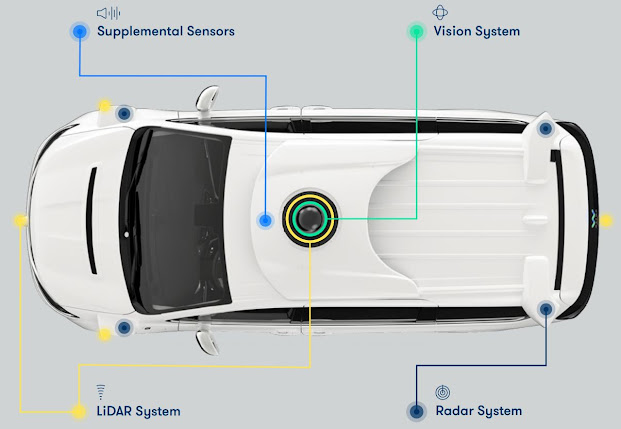Sensor Fusion Is an Important Step for Autonomous Vehicles; a Quick Overview
Sensor fusion is a software that combines data from
different sensors to improve application and system performance. Increasing
demand from various end-use industries for different applications, such as
consumer electronics, military, industrial, healthcare, home automation, and automotive
among others, has boosted the demand of sensor fusion to a great extent in the
global market. Smartphone is a common example of sensor fusion implementation.
Sensor fusion is an important process in the modern world,
where people constantly need to make sure that their systems work or are able
to function in the event of a malfunction. For example, use of radar for
traffic control, infrared for military operations, radio waves for
communication, etc. The science behind sensor fusion is somewhat difficult,
though well researched, because it involves many mathematical and scientific
principles. The first part of the science behind sensor fusion is in sorting
through all the different sources of data, i.e., radar, radio, etc.
Next the algorithm, which takes this data and breaks it down
into the different sources of data, i.e., speed, angle, frequency, etc., then
processes the data to form an overall picture of the speed of a vehicle in
question. Because of the complicated nature of this process, most modern
vehicles come equipped with their own on-board computers which perform the bulk
of the processing needed to sort through all the sensors, fuse them, and create
a meaningful report. Sensor fusion takes the idea of combining different
sensors and machine knowledge and makes it work to provide decision making
benefits while minimizing the uncertainty of human error.
Automotive sensor
fusion depends on the correct sensor combination. This software enables
auto calibration, enables gesture detection, enhances context awareness, and
improves accuracy. Advance driver assistance systems (ADAS) is the outcome of
automotive sensor fusion. Thus, car makers increasingly adopting this
technology to boost their growth in the fast-growing ADAS and automated driving
market. Sensor fusion bring inputs from multiple radars, LiDAR, and cameras to
form a single model or image of the environment around a vehicle.
The rising demand for electric and autonomous vehicles is
increasing the demand for fusion sensors in the automotive sector. For
instance, Ford Motor, the United States-based automaker, plans to invest US$ 11
billion in electric vehicles by 2022 and have 40 hybrid and fully electric
vehicles in its model lineup.




Comments
Post a Comment